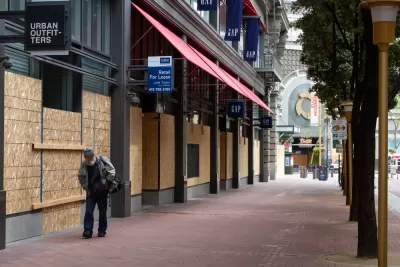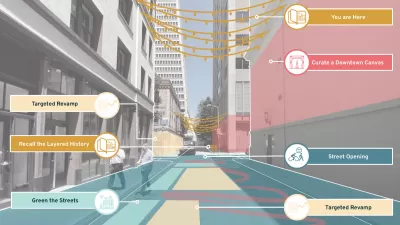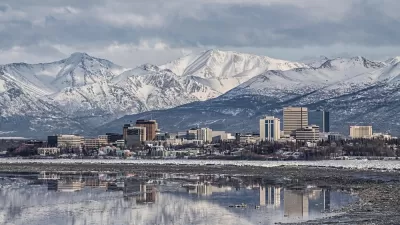A nonprofit business group released a plan to trigger the post-pandemic revitalization of Downtown San Francisco by reclaiming public space for human scale activity. But is an improved public realm sufficient to meet the challenge?

A nonprofit business group called the Downtown SF Partnership recently released the Public Realm Action Plan, created in collaboration with SITELAB urban design studio, Fehr + Peers, and John Bela, in the hopes of enticing people back to Downtown San Francisco with a less car-centric approach to the public realm.
According to a paywalled article by Noah Arroyo for the San Francisco Chronicle, the Public Realm Action Plan (PRAP) provides a development template for a part of city drastically affected by the Covid-19 pandemic in need of a comeback, with office vacancies staying stubbornly high as many tech industry companies shift to part-time and full-time remote work and residents decamp for more suburban climes. The PRAP would “entice office workers, tourists and others back to the area by revamping the landscape — closing streets to car traffic, fostering frequent outdoor events and green space, and otherwise making the area more attractive,” writes Arroyo.
As explained on its website, the PRAP Plan focuses on six action areas, comprising 43 blocks across Downtown San Francisco’s Financial District and Jackson Square Historic District.
As noted by Arroyo, the city has promised to release a downtown revitalization plan of its ow, but so far, “few specifics have emerged beyond $8 million in Mayor London Breed’s recent budget proposal for overall downtown revitalization.” The PRAP was created without a formal partnership with city leadership.
For an initial critical assessment of the PRAP, see a paywalled column by San Francisco Chronicle Urban Design Critic John King expressing skepticism about the potential of the PRAP to trigger the revitalization sought by Downtown San Francisco stakeholders.
“If you want a handy guide to the small-scale interventions that are in vogue these days for urban America — from parklets to pop-ups to cultural programming,” the PRAP is a useful document, writes King. “If you also want a document that offers a realistic blueprint for bringing the city’s Financial District back to life, keep looking.”
King offers plenty to credit the effort behind the PRAP, but the document can’t overcome a fundamental challenge facing Downtown San Francisco (and urban commercial cores in many other cities around the country): “What frames negative perceptions of the Financial District right now are empty storefronts and mostly vacant high-rises, not the lack of shady trees or lunchtime concerts.”
Planetizen picked up the news about the launch of the PRAP process in November 2021.
FULL STORY: Is this the future of downtown San Francisco? [paywall]

Montreal Mall to Become 6,000 Housing Units
Place Versailles will be transformed into a mixed-use complex over the next 25 years.

Planetizen Federal Action Tracker
A weekly monitor of how Trump’s orders and actions are impacting planners and planning in America.

DARTSpace Platform Streamlines Dallas TOD Application Process
The Dallas transit agency hopes a shorter permitting timeline will boost transit-oriented development around rail stations.

Without International Immigrants, the Rural US Population Would Be Falling 58%
Census data shows that population growth in rural areas is due in large part to international migrants.

Dead End: Nine Highways Ready for Retirement
The Freeways Without Futures report describes the nation’s most promising highway removal proposals.

Congressman Proposes Bill to Rename DC Metro “Trump Train”
The Make Autorail Great Again Act would withhold federal funding to the system until the Washington Metropolitan Area Transit Authority (WMATA), rebrands as the Washington Metropolitan Authority for Greater Access (WMAGA).
Urban Design for Planners 1: Software Tools
This six-course series explores essential urban design concepts using open source software and equips planners with the tools they need to participate fully in the urban design process.
Planning for Universal Design
Learn the tools for implementing Universal Design in planning regulations.
City of Mt Shasta
City of Camden Redevelopment Agency
City of Astoria
Transportation Research & Education Center (TREC) at Portland State University
City of Camden Redevelopment Agency
Municipality of Princeton (NJ)
Regional Transportation Commission of Southern Nevada





























